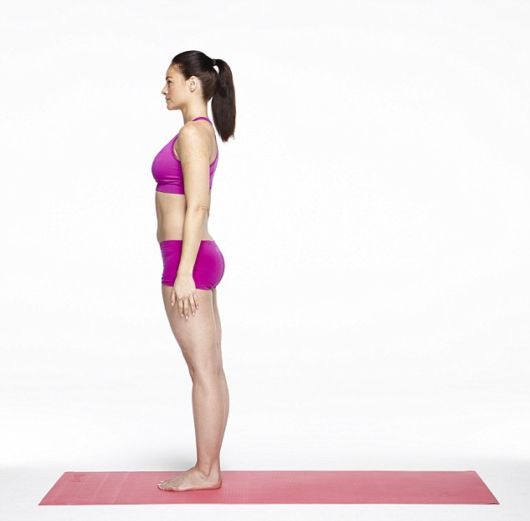|
imran
|
 |
« Reply #9 on: March 09, 2015, 12:36:45 AM » |
|
10. STANDING POSE Lower arms into original standing pose. Lower arms into original standing pose.
HOW TO EAT LIKE A YOGA EXPERT
Eat nothing — or only a light, healthy snack — in the two to three hours before a yoga class. ‘You should arrive on an empty stomach,’ says Alessandra Pecorella, a yoga teacher at The Life Centre in Islington, London. ‘Otherwise you’ll feel heavy and your body will be busy digesting your food, so it will be less able to support you during the poses.
This also helps to build discipline and will get you into the habit of eating when you’re hungry and not when you’re bored or emotional.
Eating in moderation is an important part of yoga practice, according to Alessandra. ‘Yoga texts recommend eating until the stomach is three-quarters full,’ she says. ‘Always leave a space to aid digestion.’
Eat the same foods as yogis. ‘The yogic, or Sattvic, diet is about eating fresh foods in season, when they are at their most nutritious,’ says Alessandra. ‘So it’s lots of fruits, vegetables, grains, nuts and seeds.’
These foods are full of vitamins and nutrients important for brain and body health; they also provide fibre and release energy slowly, so you’ll feel fuller for longer and be less tempted to overeat.
The yogic diet is based largely on vegetarian, alkaline foods, meaning acidic foods and drinks, such as coffee and sugary pop, are to be avoided. Fizzy drinks can also be high in calories. Instead, drink plenty of water, especially on the day of your class, to avoid cramps. If you’re sensitive to caffeine, limit your intake, as this may affect your ability to relax and get into the calm state needed for optimum practice.
A yoga class will stimulate your digestive ‘fire’ or appetite, says Alessandra. After class, she recommends a high-protein, low-carbohydrate meal such as a warm salad with chickpeas and nuts, or lentil soup. This will satisfy the appetite and help repair muscle without losing that post-yoga lightness.
Keep your diet varied. ‘Each food has its own unique vitamin and mineral profile, so don’t just eat the same thing every day,’ Alessandra says.
|
 LIFE & STYLE
LIFE & STYLE Health, Fitness and Nutrition
Health, Fitness and Nutrition 10 Steps To A Trim Tum
10 Steps To A Trim Tum LIFE & STYLE
LIFE & STYLE Health, Fitness and Nutrition
Health, Fitness and Nutrition 10 Steps To A Trim Tum
10 Steps To A Trim Tum
